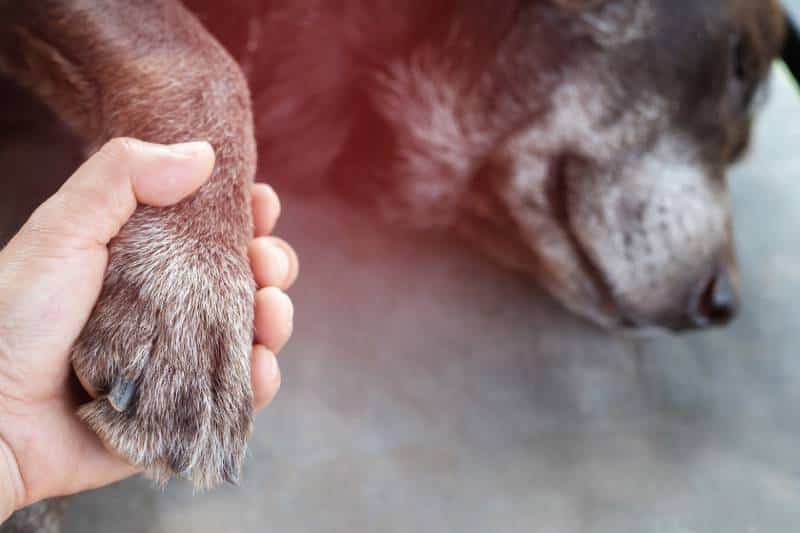In this article
Losing a beloved canine companion can be one of the most difficult experiences in life. For many people, the death of a dog can be just as hard as that of a human family member. If someone you care about has recently lost their companion, you may wonder how you can help and what you can say to let them know they’re loved and supported.
Ultimately, there’s no perfect thing to say to someone who has just lost their dog; there aren’t any magic words that will make their grief go away. Letting the person know that you care and asking if there are things you can do to help are all great ways to support close friends.
Condolence cards and check-in text messages are also nice gestures that can bring a little light into the life of someone going through a tough time.

How Can I Provide Solid Support to My Friend?
Listening without judgment is essential when it comes to supporting people who are grieving the loss of a pet. The goal isn’t to make the pain go away but to be there and provide comfort as the person you care about works through their loss as is best for them.
Allow them to reminisce and tell stories about the fun, outrageous, loving, and funny things their buddy did. Just listen and let them talk.
People often receive support in the weeks after the death of a loved one, but the grieving process usually lasts far longer — make a point of reaching out regularly to check in with the person you care about and provide a few words of love and support.

What About Condolence Cards and Other Options?
Condolence cards are great ways to show that you honor and respect the profound importance of the relationship between the person you care about and their companion.
You can write a condolence card that reflects your relationship with the person who lost their dog. Consider adding a note describing a funny incident you remember with the dog if something gentle and loving comes to mind. It’s fine to keep things simple and write a few words of support. A simple “I’m sorry for your loss and am sending love your way” is often enough to bring light into someone’s day.
Sending flowers is also a wonderful gesture that acknowledges the person’s grief and celebrates the bond between them and their companion. Consider making a donation in the dog’s name to an organization that the person you care about deeply believes in.
Are There Things to Avoid Saying?
Try to avoid statements that minimize the importance of the person’s relationship with their companion.
Questions about getting another pet or suggestions that the situation is for the best because of a long illness, while well intended, essentially downplay the intensity of the person’s loss, which can make the grieving process more difficult.

What Makes the Loss of a Canine Companion Uniquely Painful?
The loss of a companion animal can be more complex in many ways than a person’s. While there are traditions and rituals to honor people when they die, such as funerals and burial ceremonies, there’s a cultural void when commemorating companion animals.
Many companies provide bereavement leave that’s available when human family members die but don’t offer time off after the death of companion animals. The lack of social acceptance of the intensity and reality of the grief that comes with the death of a pet leads people to avoid asking for the help and time they need to heal.
Several social changes come with the loss of a dog. Many long-time daily activities (like walks) disappear, which can leave humans without exercise and moments of social contact.
How Long Can the Grieving Process Last?
Grief is a process that goes through stages, and it can take as long as a year to run its course. The first 2 months after the death of a companion are particularly intense and painful. It’s common for people to go through periods of denial, anger, bargaining, and depression before coming to terms with the loss of a loved one.
Pet owners experience feelings such as fear, guilt, and sadness after the death of a companion. Grief can even be expressed physically through aches and pains, weight changes, and appetite issues.


Final Thoughts
The grief that emerges after the death of a dog can be just as overwhelming, painful, and intense as that felt when a beloved human dies. Grief isn’t something that simply goes away; it’s a process that takes time and goes through stages. There’s nothing that you can say or do to make the pain and sorrow simply vanish.
Being available to listen and asking how you can help are great ways to provide love and support. Condolence cards and check-in texts are a few thoughtful options that honor the importance and beauty of the relationship between the person you care about and their companion.
See Also:
- Can You Donate Your Dog’s Body to a Vet Education Program? Vet-Reviewed Facts
- My Dog Died While Being Boarded: Whose Fault Is It & What to Do Next
Featured Image Credit: Soloviova Liudmyla, Shutterstock


















